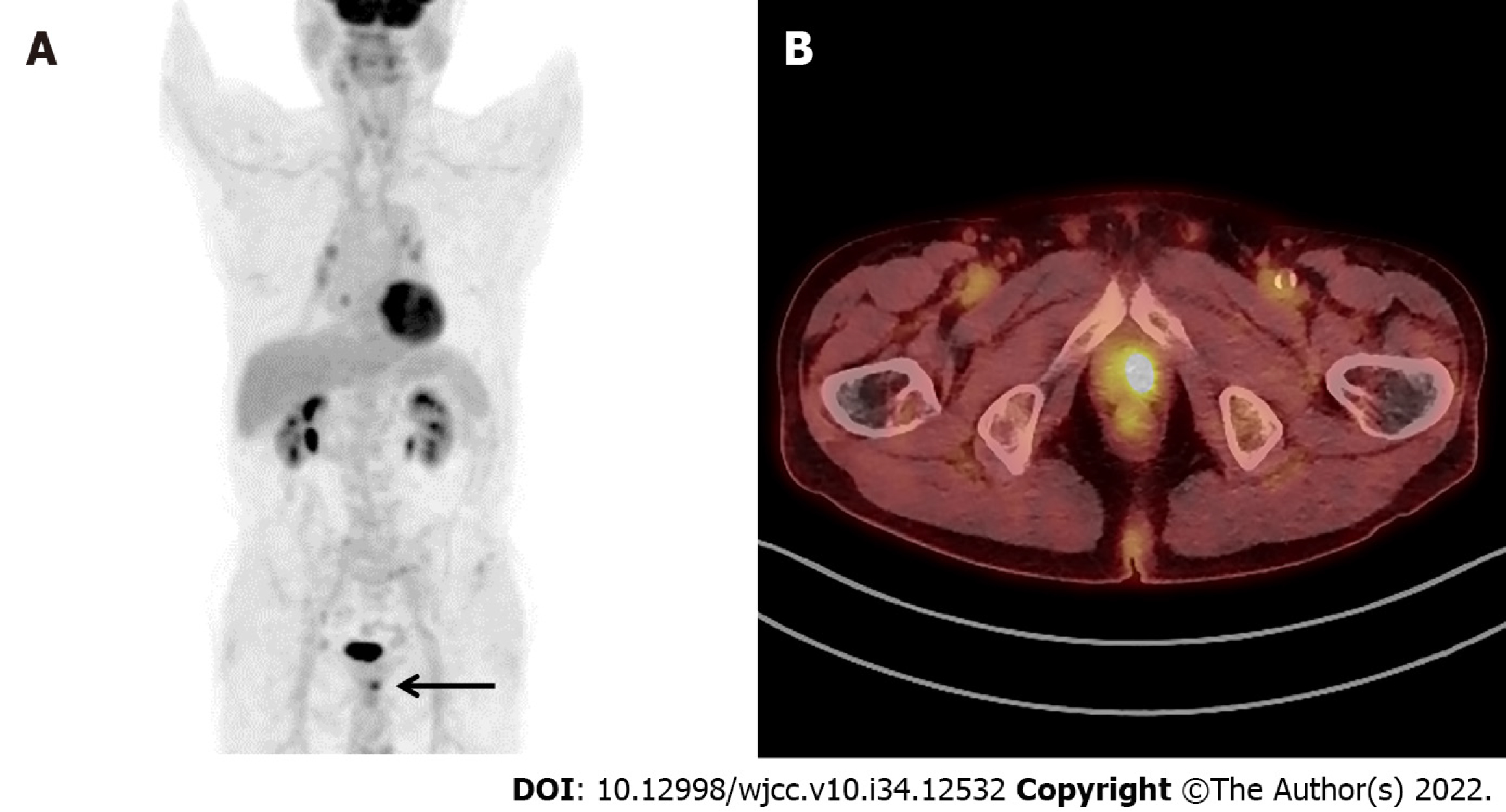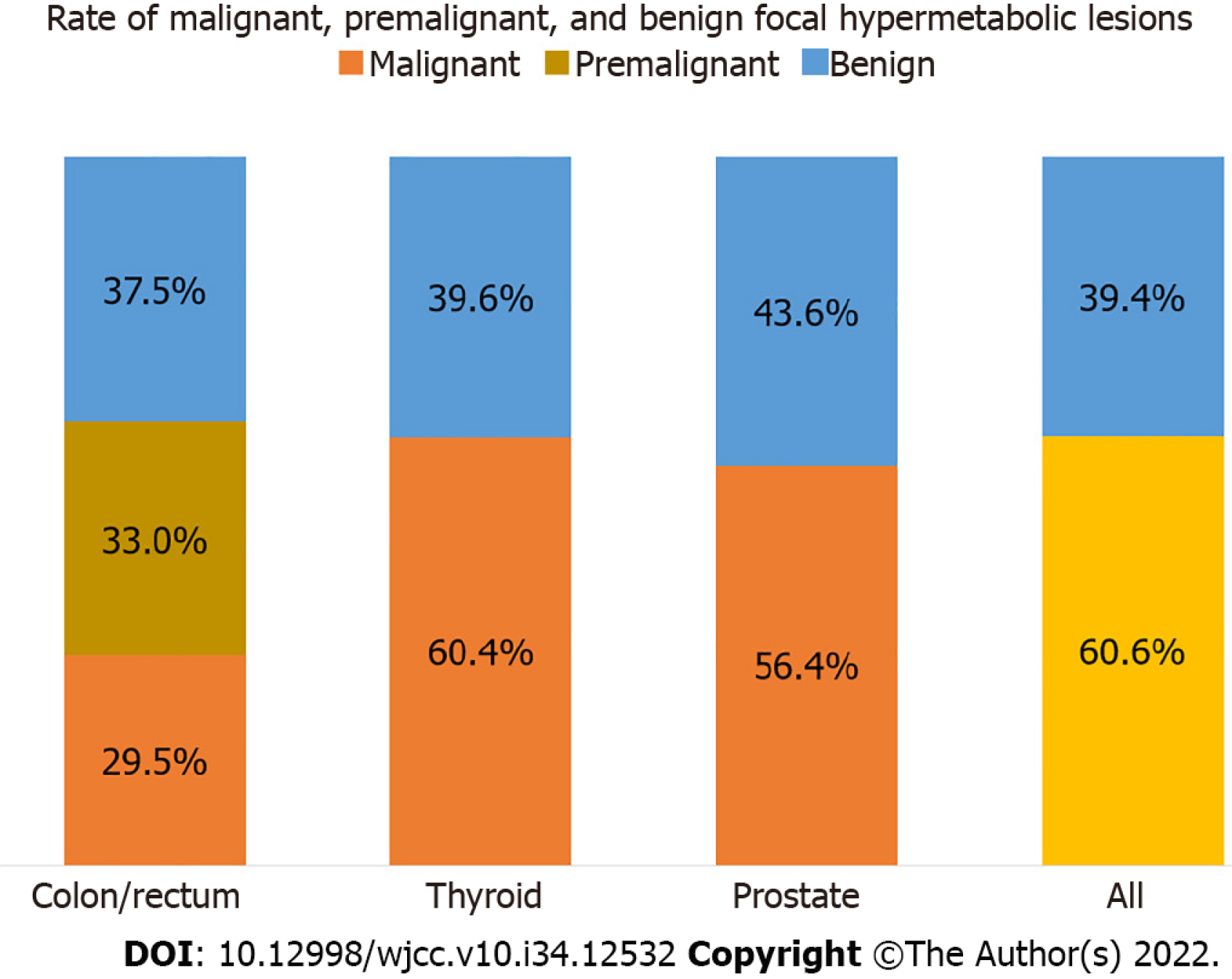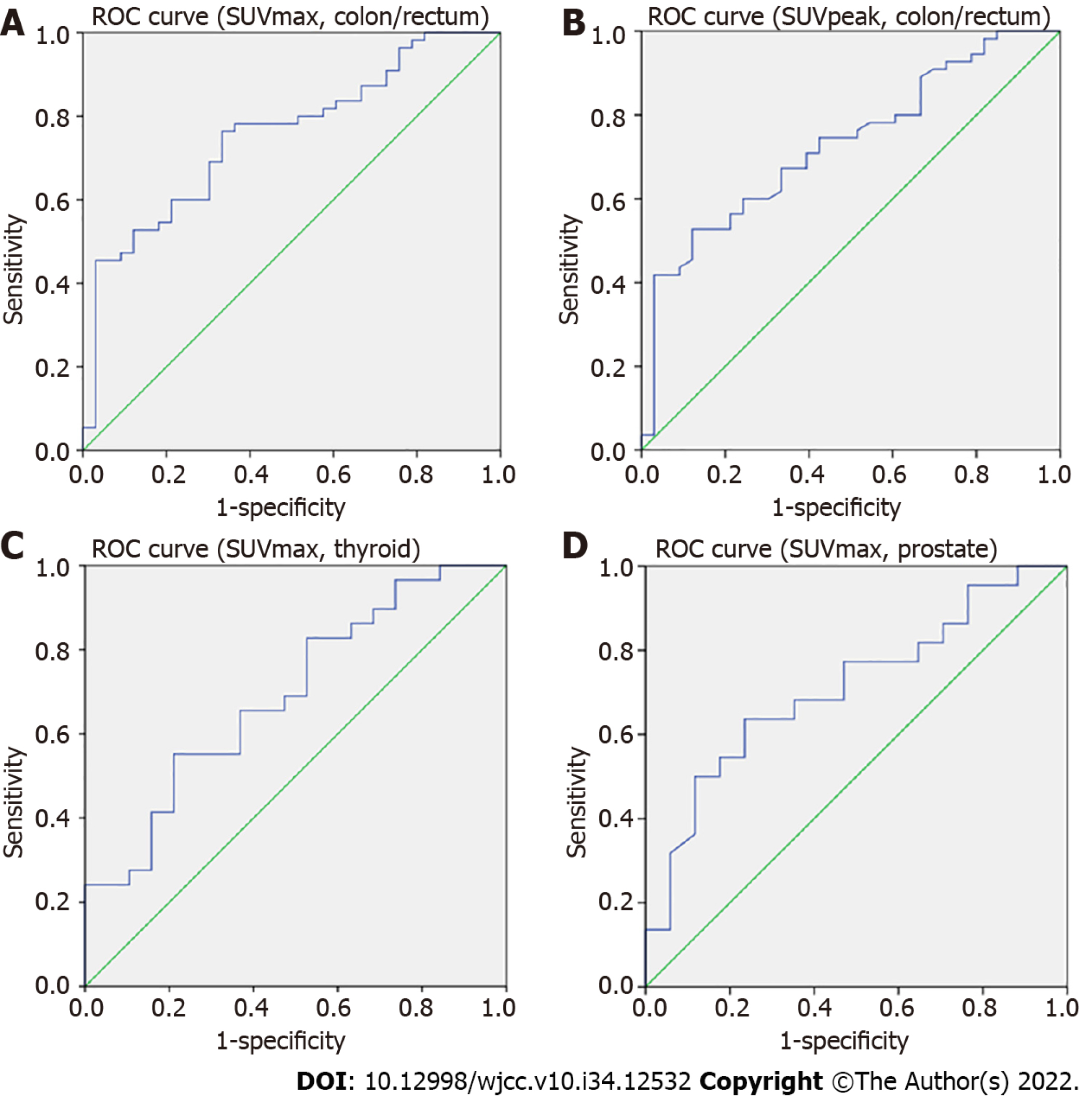Copyright
©The Author(s) 2022.
World J Clin Cases. Dec 6, 2022; 10(34): 12532-12542
Published online Dec 6, 2022. doi: 10.12998/wjcc.v10.i34.12532
Published online Dec 6, 2022. doi: 10.12998/wjcc.v10.i34.12532
Figure 1 A case of malignant incidental focal prostate fluorine-18 fluorodeoxyglucose uptake.
A: Focal uptake (black arrow) below the radioactivity of bladder on the maximum intensity projection image of a 76-year-old man diagnosed with non-small cell lung cancer; B: Axial image of fused positron emission tomography/computed tomography showing hypermetabolism (maximum standardized uptake value 8.1) in the left prostate region and histopathologically confirmed as an adenocarcinoma of the prostate gland.
Figure 2 Rates of malignant, premalignant (in colon and rectum), and benign incidental focal hypermetabolic fluorine-18 fluorode
Figure 3 Representative receiver operating characteristic curves.
A: Standardized uptake value (SUV)max of colon/rectum; B: SUVpeak of colon/rectum; C: SUVmax of thyroid; D: SUVmax of prostate. Area under the curves are 0.752, 0.729, 0.676, and 0.706, respectively. ROC: Receiver operating characteristic.
- Citation: Lee H, Hwang KH. Significance of incidental focal fluorine-18 fluorodeoxyglucose uptake in colon/rectum, thyroid, and prostate: With a brief literature review. World J Clin Cases 2022; 10(34): 12532-12542
- URL: https://www.wjgnet.com/2307-8960/full/v10/i34/12532.htm
- DOI: https://dx.doi.org/10.12998/wjcc.v10.i34.12532











